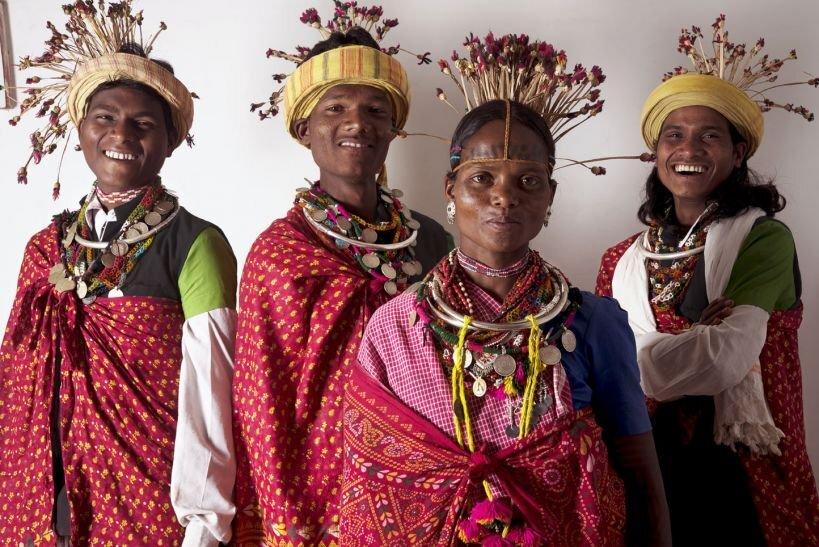Social Justice
Granting Habitat Rights and Implications
- 14 Oct 2023
- 7 min read
For Prelims: Granting Tribal Rights and Implications, Baiga Tribe, PVTG (Particularly Vulnerable Tribal Group), Bharia and Kamar Tribe, Scheduled Tribes and Other Traditional Forest Dwellers (Recognition of Forest Rights) Act, 2006.
For Mains: Granting Tribal Rights and Implications, Welfare schemes for vulnerable sections of the population by the Centre and States and the performance of these schemes.
Why in News?
Recently, the Chhattisgarh Government has granted habitat rights to its Baiga PVTG (Particularly Vulnerable Tribal Group) right after the Kamar PVTG received habitat rights in August 2023.
- The Baiga PVTG became the second group to be granted these rights in Chhatisgarh.
- Chhattisgarh has seven PVTGs (Kamar, Baiga, Pahadi Korba, Abujhmadiya, Birhor, Pando and Bhujia).
What is the Baiga Tribe?
- The Baiga (means sorcerers) tribe mainly lives in Chhattisgarh, Jharkhand, Bihar, Odisha, West Bengal, Madhya Pradesh and Uttar Pradesh.
- Traditionally, the Baiga lived a semi-nomadic life and practised slash and burn cultivation. Now, they are mainly dependent on minor forest produce for their livelihood.
- Bamboo is the primary resource.
- Tattooing is an integral part of Baiga culture, every age and body part has a specific tattoo reserved for the occasion.
What are Habitat Rights?
- About:
- Habitat rights recognition provides the community concerned rights over their customary territory of habitation, socio-cultural practices, economic and livelihood means, intellectual knowledge of biodiversity and ecology, traditional knowledge of use of natural resources, as well as protection and conservation of their natural and cultural heritage.
- Habitat rights safeguard and promote traditional livelihood and ecological knowledge passed down through generations. They also help converge different government schemes and initiatives from various departments to empower PVTG communities to develop their habitats.
- According to the FRA, "habitat" includes customary habitats and those in reserved and protected forests of PVTGs and other forest-dwelling Scheduled Tribes.
- Out of 75 PVTG in India, only three have habitat rights- the Bharia PVTG in Madhya Pradesh was the first, followed by the Kamar tribe and now the Baiga tribe in Chhattisgarh.
- Procedure of Declaring Habitat:
- The procedure is based on a detailed guideline given for this purpose in 2014 by the Ministry of Tribal Affairs.
- The process involves consultation with traditional tribal leaders to determine the extent of culture, traditions, and occupation.
- Coordination between state-level departments, including Forest, Revenue, Tribal, and Panchayati Raj, and with the UNDP team is essential for defining and declaring habitats.
- Legality:
- Habitat rights are granted to PVTGs under Section 3(1)(e) of the Scheduled Tribes and Other Traditional Forest Dwellers (Recognition of Forest Rights) Act, 2006 (also known as FRA).
- The recognition of Habitat rights grants PVTGs possession over their customary territory, encompassing habitation, economic and livelihood means, biodiversity knowledge.
Identification of PVTGs
- PVTGs are identified based on criteria such as technological backwardness, stagnant or declining population growth, low literacy levels, subsistence economy, and challenging living conditions.
- They face vulnerability in health, education, nutrition, and livelihood.
- The Ministry of Tribal Affairs has identified 75 PVGTs in 18 states and one Union Territory.
- In 1973, the Dhebar Commission created Primitive Tribal Groups (PTGs) as a separate category, who are less developed among the tribal groups. In 2006, the Government of India renamed the PTGs as PVTGs.
What is the Significance of Granting Habitat Rights?
- Preservation of Culture and Heritage:
- Granting tribal rights helps in preserving the unique cultural, social, and traditional heritage of tribal communities. It allows them to maintain their distinct languages, rituals, customs, and traditional knowledge systems.
- Empowerment and Social Justice:
- Tribal rights empower these communities by providing them with legal recognition, ensuring their participation in decision-making processes that affect their lives, and rectifying historical injustices. This empowerment contributes to a more just and equal society.
- Protection of Livelihoods:
- Many tribal communities depend on their natural surroundings for their livelihoods. Granting rights over lands and resources ensures that they can sustain their traditional occupations like hunting, gathering, fishing, and farming, supporting their economic well-being.
- Sustainable Development:
- By granting rights to tribal communities, governments can promote sustainable development. Indigenous practices often prioritize sustainability and conservation, which is crucial for the environment and the overall well-being of society.
- Conservation of Biodiversity:
- Tribal communities often possess unique knowledge about their local ecosystems, flora, fauna, and sustainable resource management. Recognizing their rights allows for the preservation of biodiversity and sustainable management of natural resources.
Conclusion
Granting tribal rights is fundamental to fostering a more inclusive, just, and harmonious society where the rights, cultures, and traditions of all citizens, including tribal communities, are respected and protected.
UPSC Civil Services Examination, Previous Year Question (PYQ)
Q.1 Consider the following pairs: (2013)
| Tribe | State | |
| 1. | Limboo (Limbu) | Sikkim |
| 2. | Karbi | Himachal Pradesh |
| 3. | Dongaria Kondh | Odisha |
| 4. | Bonda | Tamil Nadu |
Which of the above pairs are correctly matched?
(a) 1 and 3 only
(b) 2 and 4 only
(c) 1, 3 and 4 only
(d) 1, 2, 3 and 4
Ans: (a)
Q.2 Consider the following statements about Particularly Vulnerable Tribal Groups (PVTGs) in India: (2019)
- PVTGs reside in 18 States and one Union Territory.
- A stagnant or declining population is one of the criteria for determining PVTG status.
- There are 95 PVTGs officially notified in the country so far.
- Irular and Konda Reddi tribes are included in the list of PVTGs.
Which of the statements given above are correct?
(a) 1, 2 and 3
(b) 2, 3 and 4
(c) 1, 2 and 4
(d) 1, 3 and 4
Ans: (c)







